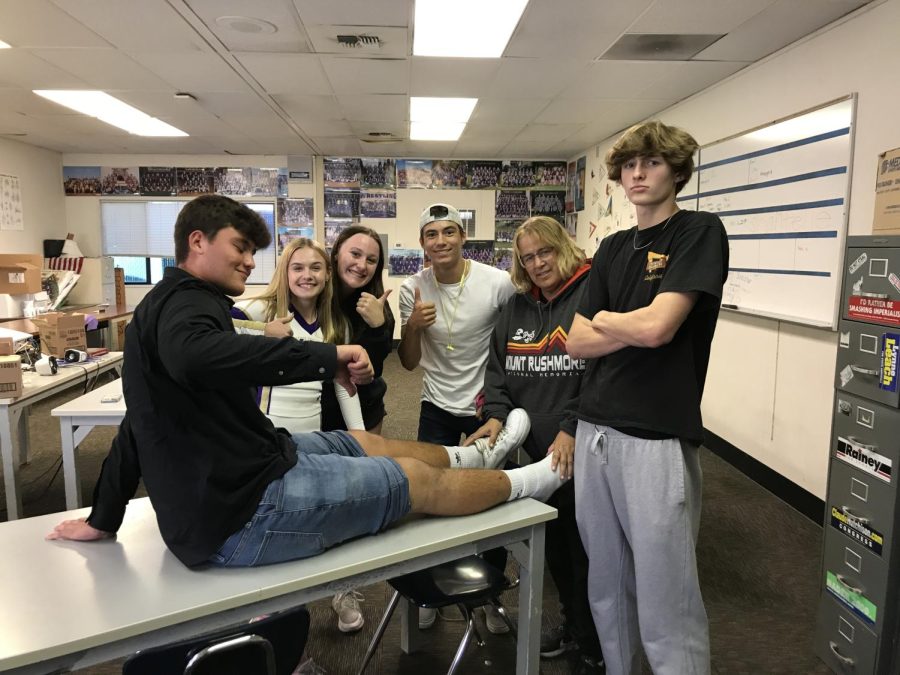Lack of funding for high school athletic trainers
“I do it because I love working with motivated people, and you don’t find more motivated people than athletes. I also love sports and the relationships I build with the kids,” said athletic trainer Diana Hasenpflug.
October 25, 2022
High school athletic trainers across the country are underpaid and overworked. Many have to take on a full-time teacher’s job on top of the 40-hour work week they put in taping and helping athletes recover from injuries
Even Amador Valley, located in a city twice ranked the wealthiest middle sized city in America, has had problems with establishing the position. There are no medical benefits, a retirement package, or decent pay. Athletic Trainers have been employed through clinics, hospitals, and doctor’s offices.
“My salary has been the same since I started more than 20 years ago. This is very disturbing because athletic trainer credentials have changed, they’ve mandated a higher degree of education but they don’t compensate for the extra certifications,” said Amador Valley Athletic Trainer Diana Hasenpflug.
California is the only state in the US where athletic trainers are not mandated at high schools. Many times, there is no room in the budget allocated to pay their salaries. This is one factor that contributes to why they are severely underfunded in this state.
“School districts scrape to pay our salaries. Mine has been paid for by boosters, they’ve taken it out of safety money, and now it’s being paid for by the district office,” said Hasenpflug.
There has been a nationwide shortage of athletic trainers especially in high schools, and poor funding has been one reason for this problem. Another factor was the COVID-19 pandemic that put a pause on sports and caused trainers to find other jobs.
“Foothill High School’s athletic trainer moved to Colorado and there she gets paid the same amount of money. But since the cost of living is cheaper there, she can afford to buy a house when in California she could not,” said Hasenpflug.
Athletes also suffer due to the shortage, as some are forced to train and compete without an athletic trainer. During games, high schools may pay trainers from the other team to work for both sides, but they’re spread thin in doing so.
“As a player, I can echo the fact that athletes at the school want a dedicated athletic trainer to help with preventing and controlling injuries. I know Cal High feels the same way since they don’t have one either,” said Foothill senior and football player Jake Morgan.
An athletic trainer’s job description includes rehabilitation, performing baseline testing, bandaging and tending to injuries, supplying CPR, water, ice, and motivation, as well as being prepared for any possible scenario an athlete may encounter.
“I think that athletic trainers should be given more recognition and be paid more because of how much of an impact they have on athletes. Knowing about their salary definitely impacts what I want to do when I’m older, just because they don’t make that much money,” said sports medicine student Jiya Sandhu (‘23).
Hasenpflug works with every sport at Amador for 10 months out of the year, putting in 40-50 hours every week when her contract only requires 35. And with over 1300 athletes at Amador, she has many people counting on her.
“Unlike other teachers, Mrs. H does stuff after school every single day. On Friday nights she’s out till 11 o’clock out on the field. When things go wrong, she’s always there to tell me what to do to get better. She’s the best,” said Amador Valley football player Brady Nassar (‘23).





